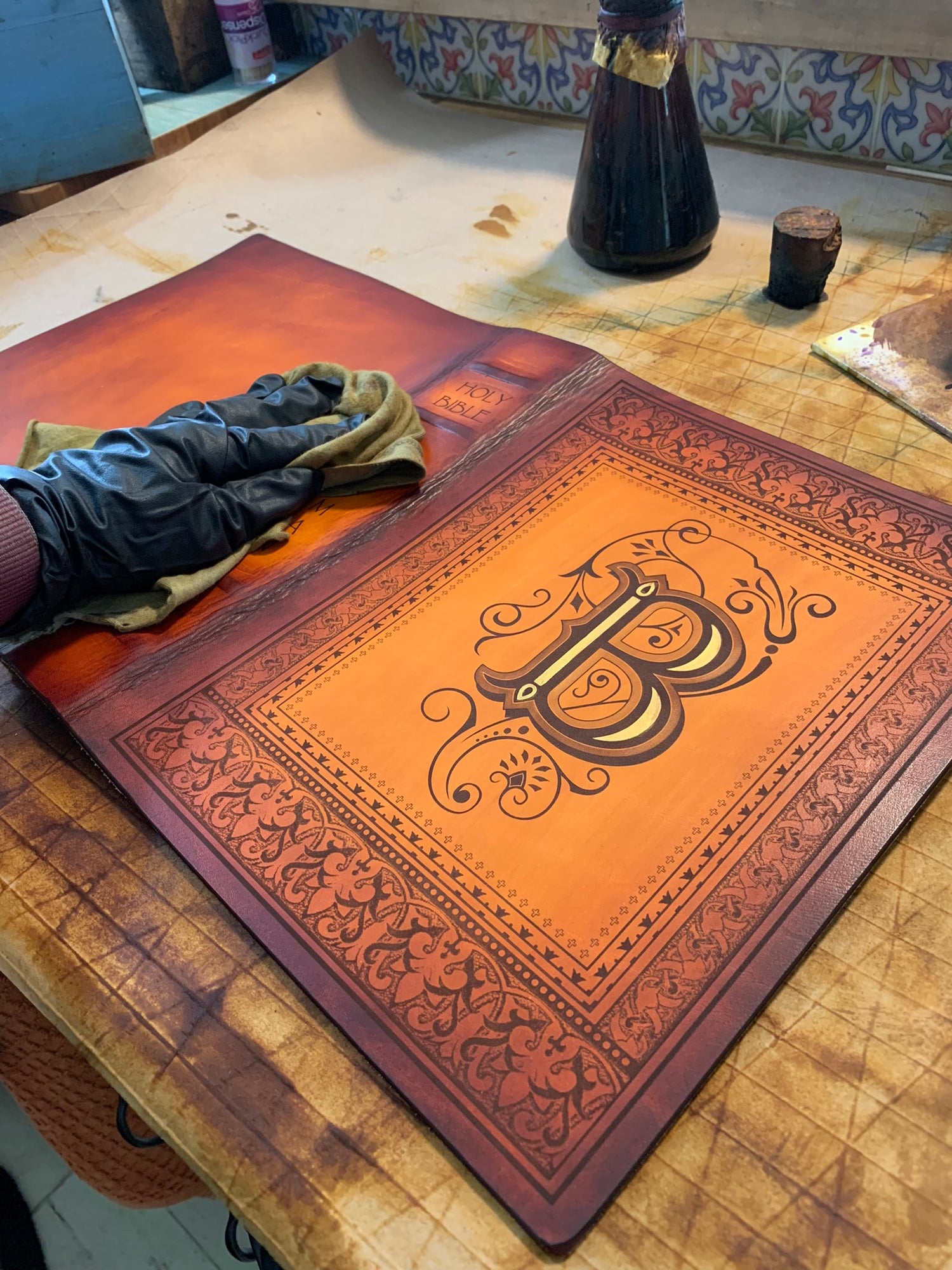Process

Leather Work
We start with unfinished veg-tanned tooling leather. The weight we use is similar to a flexible leather belt, a little lighter weight if a personal size bible. We cut to the individual size for each product trying to miss the scars, brands and blemishes as much as possible. We then laser engrave the chosen design and/or text, bevel the edges and thin the bend for a layflat yet "close flat" effect. The spine is then pressed into shape. Hand embellishements and embossing comes next and vary with each design depending on what it needs to most enhance the final product. Hand dyeing and polishing comes next. Our standard technique envolves layering the dye with it being lighter around the design and darker on the edges. Occasionaly a few blemishes don't show up until the dye process darkens them. Usually this adds to the uniqueness of each cover and the proof that perfection is rarely possible in hand made goods using real raw leather, but if it interferes with the over all look, we start all over. The last steps are the burnishing of the edges, waxing and polishing the finish and then glueing the new leather to the original text block.

Bibles We Use
The Bibles that we offer are selected from what we have found on the market that meet our criteria for how well they are made, how readable the font is and affordable enough to fit our price model. The largest Bible we offer(KJV Dore' illustrated) is the only one that does not have the words of Christ in red. For our family size bibles we only use bibles that have the family heritage pages. On our personal size bibles we generally purchase the large font when available (9-10) font size) and the words of Christ in red. We use the same process on binding these new bibles as rebinding the old. The original cover is stripped of and then the new customized leather is glued to the new textblock.

Rebinding Books
The original cover is taken off of the text block and if there are loose pages we use a "tipped in" method to reinsert the pages. The text block is then glued to the new leather cover with the text block spine directly glued to the leather. This helps reinforce and "sinch" the text block unlike the floating binding technique. So unlike your original bible with a lined inside that connects to the first page, with our techique you see the suede side of the leather when opened and a clean seam where the leather meets the text block.
